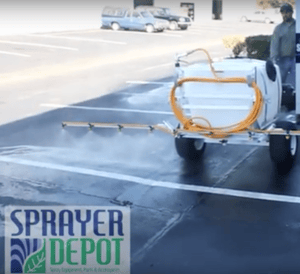 Spring is finally here and the warmer temperatures provide welcome relief. However, spring can also bring unpredictable weather. From heavy rains to windy days and even the occasional cold spell, it’s hard to determine the best time for your application. The spraying business doesn’t stop to wait for perfect timing, so as the saying goes, "the show must go on"!
Spring is finally here and the warmer temperatures provide welcome relief. However, spring can also bring unpredictable weather. From heavy rains to windy days and even the occasional cold spell, it’s hard to determine the best time for your application. The spraying business doesn’t stop to wait for perfect timing, so as the saying goes, "the show must go on"!
There are many tips & tricks when it comes to spring spraying but we've gathered 3 tips we feel will have a bigger impact on your application.
Don't get caught unprepared, get your sprayer ready for an effective application by reading below:
Reduce Spray Drift
We all know weather affects spray drift, so monitoring wind speed is not only considered smart business but also a good safety precaution. Before you start spraying, follow these steps to reduce spray drift:
- Spray at low wind velocities
- Lower spraying pressures to allow for a larger droplet size
- Use drift control spray tips
- Monitor wind direction to avoid spraying upwind from sensitive crops, homes or other areas
Check Nozzle Spacing
Prevent off-target movement by checking the spacing between nozzles. Nozzle spacing depends on the spray angle of the nozzle tips and their height from the target in order to achieve the proper overlap. A 1:1 relationship between nozzle spacing and boom height is recommended (i.e. 15” boom height = 15” nozzle spacing). Another benefit of ensuring proper spacing is reduced drift and better coverage.
Verify Spray Pattern
Spray pattern should be uniform across nozzles. So how can you verify this? You could use a tester specifically designed to check the spraying pattern, however, there’s an easier and inexpensive way to do this yourself.
Simply spray water over gravel or concrete and watch the area dry. If you notice streaks as it dries then it means you've sprayed unevenly and one or more of your nozzles needs to be replaced.
Easy, right? That’s it, follow these helpful tips this spring to keep your application on-target and on-budget!

.png?width=280&name=SameDayShippingGuarantee-New%20(1).png)




